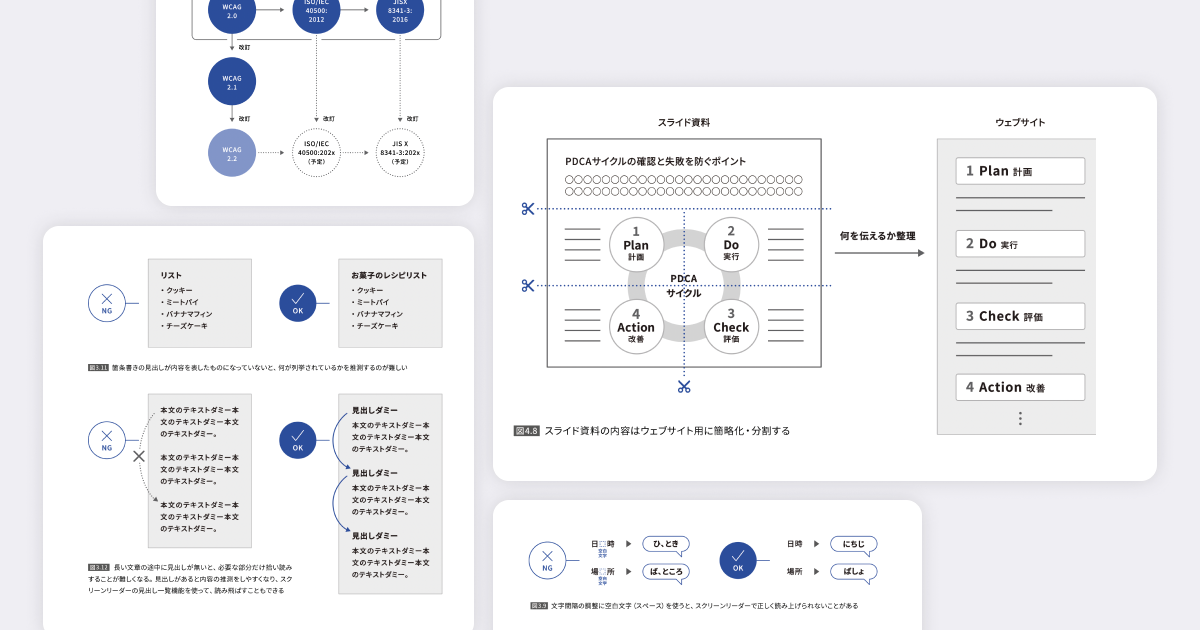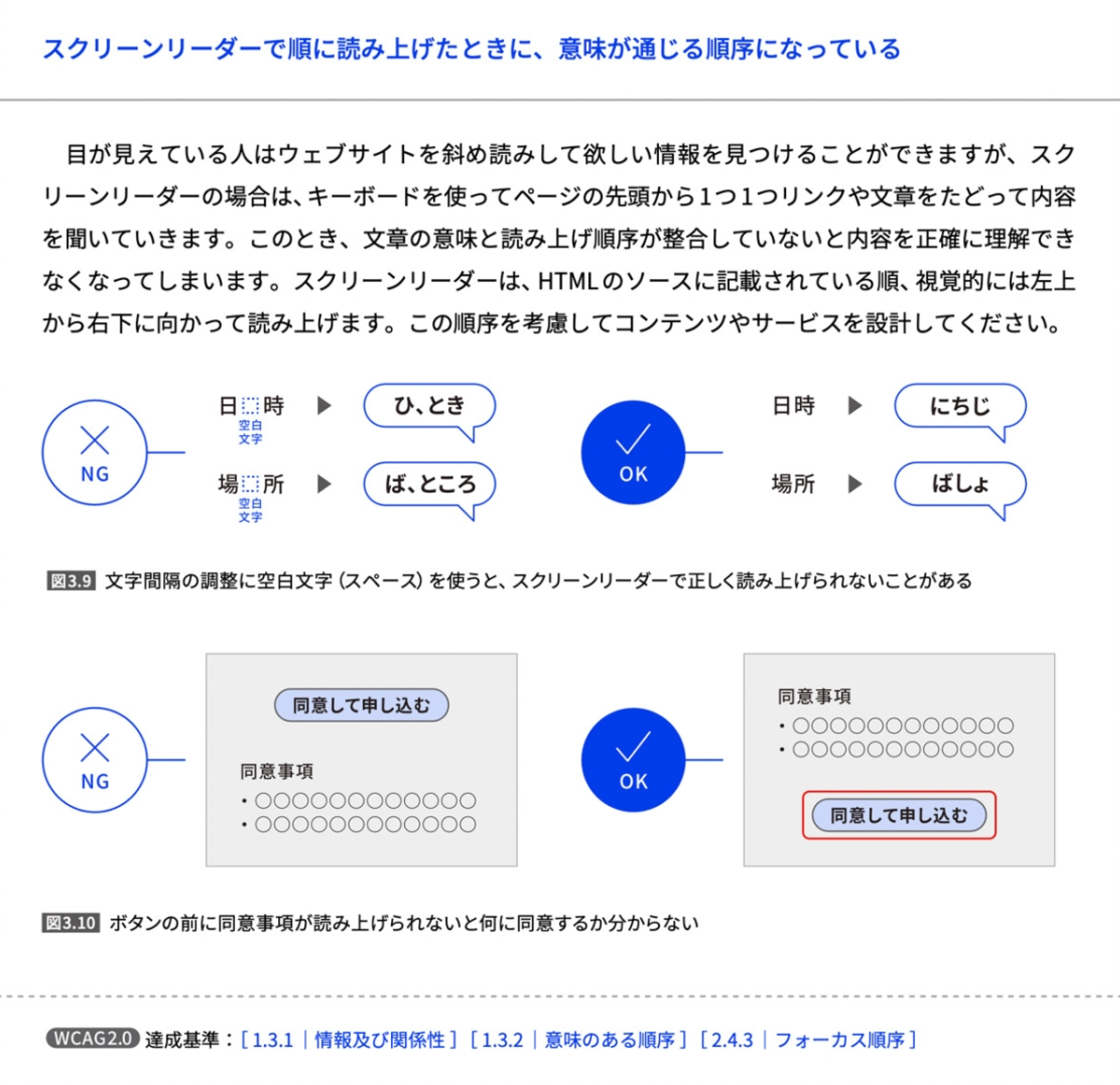Web Accessibility Introduction Guidebook
- Last Updated:

Digital Agency is continuously working to improve "web accessibility" in order to realize "a people-friendly digitalization where no one is left behind." This time, we will release a guidebook for beginners to learn from scratch, which explains the concept of web accessibility and the key points of how to approach it, for government officials and business operators who are new to web accessibility.
We hope you will take advantage of it as a way to help create friendly services.
Background of Publication
In order to work on improving web accessibility, it is necessary to check each of several very specialized standards and guidelines. Therefore, while not knowing the appropriate way to do it, we may follow the currently incorrect response, respond unnecessarily or excessively, or respond inappropriately. As the importance of not only websites but also digital services such as applications and procedures is increasing, there is a shortage of training materials for administrative agencies that beginners can learn based on the latest technological trends.
Features of this Guidebook
Learning from Scratch
The goal is to enable employees who are in charge of public relations, service development, etc. and who must work on improving web accessibility to work on web accessibility from where they do not have any knowledge and to be able to communicate appropriately with procurement and contract business operators.
You can see the latest methods and there are many examples.
Since the establishment of JIS X 8341-3:2016, which is often referred to as the current standard, you can learn the latest thinking on how to tackle new issues (such as smartphone support) that have emerged. The examples in this document are based on actual examples accumulated from work in Digital Agency.
It can be understood concretely with rich illustrations and kind words.
We have eliminated technical terms as much as possible and included a wealth of illustrations so that even non-technical designers and administrative personnel can understand what to do specifically.

Who should read this guide
People who have no idea about web accessibility and have never touched it properly. You can check the points you need to know when working on ordering and outsourcing information systems and digital services.
Structure of the Guidebook
This guidebook consists of the main text and appendixes. An HTML version and explanatory videos will also be available at a later date.
Material to be published later
- HTML Guidebook for Introducing Web Accessibility
- Sample list of procurement specifications
Positioning
Informative
On October 16, 2025, it was incorporated into the Digital Society Promotion Standard Guidelines as an Informative document.
Download Documentation
Web Accessibility Implementation Guidebook (PDF / 11,761 kb) (Date of establishment: October 16, 2025)
The date of incorporation into the Digital Society Promotion Standard Guidelines is listed as the date of formulation.
- Accessibility of the Web Accessibility Deployment Guidebook
- JIS X 8341-3:2016 Quick Reference (Excel / 27 kb)
- "Creating a society where procedures can be done even if you are blind" How to improve web accessibility (YouTube)
What's New
- Update Details (Excel / 71 kb) (updated October 16, 2025)
March 29, 2024 Version
- Added "4.3 Smartphone Accessibility".
- The current status of various information referenced in the guidebook has been reflected.
- Additions and corrections have been made to promote a more accurate understanding.
November 10, 2023 Version
- 2.2 Web Accessibility Guidelines and Standards and 6.2 Links reflect the current status of WCAG.
- The expression has been corrected to conform to the achievement standard of JIS X 8341-3 "3 What should be achieved in web accessibility".
- Additions and corrections have been made to promote a more accurate understanding.
May 12, 2023 Version
- Minor errors have been corrected.
March 17, 2023 Version
- Minor errors have been corrected.
February 24, 2023 Version
- We have revised the wording and content of Section 3, "Web Accessibility Goals," to make the description consistent.
- 5.1 Frequently Asked Questions Fixed description and instructions for developing single-page applications.
- The Japanese descriptions were generally revised to make them easier to understand.
January 20, 2023 Version
- "2. Web Accessibility Basics: Some of the recommendations have been revised to deepen the understanding of readers who operate sites with a high public profile."
- "3.3 Things to check when appropriate" and "3.4 Adoption requires careful consideration": The wording was corrected for better understanding.
- "4. Web Accessibility Implementation Process": We modified some of the recommendations to deepen the understanding of readers who operate sites with a high public profile.
- 5.1 Frequently Asked Questions: Inconsistencies in the guidebook have been corrected to make it more realistic.
December 12, 2022 Version
- 2.2 Web Accessibility Guidelines and Standards: Corrects wording in the organization and description of the standards that lacks precision and rigor.
- "3. Web accessibility goals": Corrected expressions that lack accuracy and strictness in light of the JIS X 8341-3 fulfillment criteria.
Inquiries and Requests
Please send us your opinions and requests from .